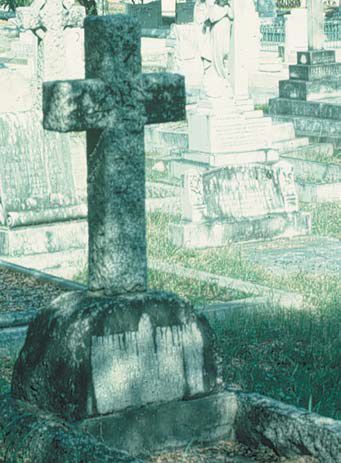
Physiology News Magazine
Ernest Starling (1866–1927)
Features
Ernest Starling (1866–1927)
Features
Tim Biscoe
Emeritus Professor of Physiology, University College London
https://doi.org/10.36866/pn.53.35

In Physiology News number 51, David Miller wrote about the grave of Sydney Ringer. His piece caused Ann Silver to remind me that I had once visited the grave of Starling. In 1976 I went to Kingston, Jamaica to examine in physiology at the Medical School. Professor Jones took me to Starling’s grave in the English churchyard. The picture shows the gravestone at that time.
The life of Starling and his colleague William Bayliss is described with charm and elegance by Sir Charles Lovatt Evans in the First Bayliss-Starling memorial lecture entitled Reminiscences of Bayliss and Starling. The lecture was given at University College London on 22 March, 1963 and was published by the Physiological Society in 1964 as a separate pamphlet bound, as was the custom for The Journal in those days, in pink paper.
Lovatt Evans should be read for his wit and for conjuring a lost time. The connection to Ringer is close since they all three worked at University College and, according to Evans, Starling and Bayliss were both elected members of the Physiological Society at the Annual Meeting at UCL on the 15 February,1890 with Sydney Ringer in the chair. Furthermore, Bayliss was married to Starling’s sister. Bayliss was ‘gentle, retiring and kindly’, whilst Starling was brisk, ambitious, a bit quixotic, serious, generous, highly strung’.
Their research separately and together was outstanding. Starling formulated the hypothesis about the balance of forces across capillaries, together they showed that the excitation wave in the heart travels from base to apex, and much else. They studied the innervation and movements of the intestines. Their most revolutionary work was the experiment one afternoon that showed the pancreatic secretion to be controlled by an extract of the jejunal mucosa. This discovery, of secretin, led to the general name hormone and the development of a new understanding of the way in which living things function. It led to a revolution in biology, showing that substances may be released at one site and act at another to change function. The work is beautifully described by Bayliss and Starling (1902) and it is a model paper. Anyone interested might also wish to read the comprehensive account by Gregory (1977).
There was also Starling’s law of the heart and The Principles of Human Physiology and, of course, Bayliss on the Principles of General Physiology which is maybe even more of a treasure in the first or second edition.
Evans says on ‘…11th April he started off on the ill-fated journey to Jamaica, and by the irony of fate died of heart failure as the ship approached Kingston, on 2 May. He was buried at St. Andrew’s Parish Church, Halfway Tree, near Kingston the next day’.


References
Bayliss WM, Starling EH (1902). The mechanism of pancreatic secretion. J Physiol 28, 325-353.
Gregory RA (1977). The gastrointestinal hormones: an historical review. In The Pursuit of Nature, pp 105-132. Cambridge University Press, Cambridge, UK.
